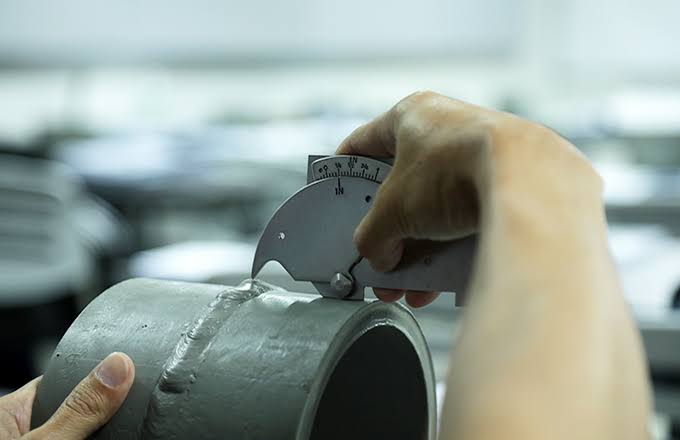Contents
What is welding inspection and testing?
Welding inspection is to check or know characteristics a weld has and to inspect discontinuities in the weld. The size of a weld is very important as its strength and performance can be determined. It is good to know the performance of a weld and to know if it may or may not withstand stresses applied during service.

The primary purpose of weld inspection is to reveal the weld quality and discontinuities in the weld, knowing if the objectives are met. Discontinuities are known as welding defects, and they cause premature weld failure due to added stress concentrations or reduction of strength within the welded component.
In evaluating the quality of a weld, there must be some criteria to which the weld characteristics can be compared. There are stages of some weld discontinuities that can be accepted depending on the suitable quality for its intended application. Codes and standards are formed specifically for a variety of welding fabrication applications to ensure they meet their standards. It is also implied to dictate the levels of welds discontinuities if they can be accepted. It is important to choose and follow a welding standard that is applied to a specific application within the industry and know if the intended goals are met.
The acceptance criteria quality of welding can be originated can be gotten from several sources. The sizes and some other dimensional information such as the length and locations of welds will be provided in the welding fabrication drawing or blueprint. These requirements are created through design calculations or gotten from proven designs that meet the quality of the welded connection.
Read more: Understanding welding inspection
Who is a welding inspector?
A welding inspector is a qualified person who detects a weld to ensure it meets the code and standard requirements. As welding inspection requires a wide variety of knowledge, a welding inspector to have an understanding of welding and fabrication entirely including the reading of welding drawings, symbols, and procedures; welding joint design; code and standard requirements; and inspection and testing techniques.
Welding inspectors must undergo welding inspection training and ensure they obtain certification by passing the examination. There are a number of training courses available internationally, but the most popular program used in the USA is administered by the American welding society (AWS).

What are the Weld inspection techniques?
The following stated below are different methods of inspecting welds;
1. Visual inspection: visual inspection is the most common, easiest, and least expensive method of inspecting a weld. If performed correctly, it is one of the effective methods of welding inspection for any application.
2. Surface crack detection: these inspection techniques are used to detect fine cracks, porosity, seams, and other surface-breaking welding discontinuities. Surface crack detection can be achieved in two ways; liquid penetrant inspection or magnetic particle inspection.
3. Radiographic and ultrasonic weld inspection: these methods are known as Non-destructive testing (NDT). They are performed to check the quality and discontinuities of the weld without destroying the welded component.
4. Destructive weld testing: these methods are not usually established because it involves breaking the welded component. It is done in order to evaluate the mechanical and physical characteristics of the weld. Destructive weld testing is also done to check the quality of welds.
5. Sound welding inspection: this is one of the most successful welding quality inspections. It should be after the evaluation of the full weld quality requirements and acceptance criteria.

Leave a Reply